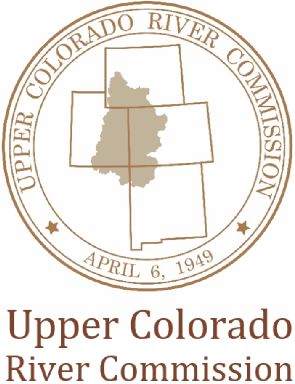The Demand Management Storage Agreement was part of the 2019 drought contingency plan for the Upper Basin. That Agreement did not create or otherwise guarantee the establishment of a demand management program. It only authorized use of unfilled federal storage capacity which allowed The Upper Division States to continue investigating the feasibility of a potential demand management program. Since the Agreement was finalized in 2019 the Upper Division States have been investigating the feasibility of a demand management program with water users and stakeholders within their respective states and with the other Upper Division States through the Upper Colorado River Commission (UCRC).
COLORADO RIVER AND THE UPPER BASIN
Water management and operations in the Upper Basin differ greatly from those in the Lower Basin. Only about 25 diversions from the Colorado River main stem in the Lower Basin account for about 90% of the total main stem water use. Each of those diversions are authorized and administered through a contract with the Bureau of Reclamation. By comparison, there are over 2,500 surface water diversions in Wyoming’s Colorado River Basin, with more than twice as many individually held water rights. Extended to the whole Upper Basin, there are many thousands of diversions, water rights and water users to consider under four differing state law systems. This makes any method of reducing water use in the Upper Basin an exceptionally complicated endeavor.
Our
Purpose
The purpose of a demand management program will be to temporarily reduce consumptive uses in the Upper Basin or augment supplies with imported water, if needed in times of drought, to help assure continued compliance with Article III of the Colorado River Compact. Importantly, a program must not impair the right to exercise existing Upper Basin water rights in the future.
There are many outstanding issues that must be completely investigated before an Upper Basin demand management program can be established. Those issues include, among other things, determining transit losses that will occur by moving conserved water downstream to Lake Powell, securing sufficient demand management water volumes, measuring conserved consumptive use volumes, funding, evaluating local impacts from non-use, ensuring delivery of conserved consumptive use volumes to the authorized federal storage without diminishment by downstream diverters, and developing the expertise and resources necessary to administer such a program. These issues, as well as others, are complicated by the fact that a demand management program must work in all four Upper Division States where differing water laws apply.
In addition to authorizing storage, the Demand Management Storage Agreement sets forth the minimum conditions under which the Upper Division States can access the authorized storage prior to 2026. If, after study, the UCRC determines that a demand management program is feasible, then it may develop and implement a program. A program can only be implemented if approved independently by each of the Upper Division States. The Upper Division States, through the UCRC, and the Secretary of the Interior must enter into agreements on the methodology, process and documentation for verification and accounting for the creation, conveyance, and storage of conserved water. During the study and development of a program, and prior to entering any agreement, the UCRC and the Secretary must also consult with the Lower Division States.
